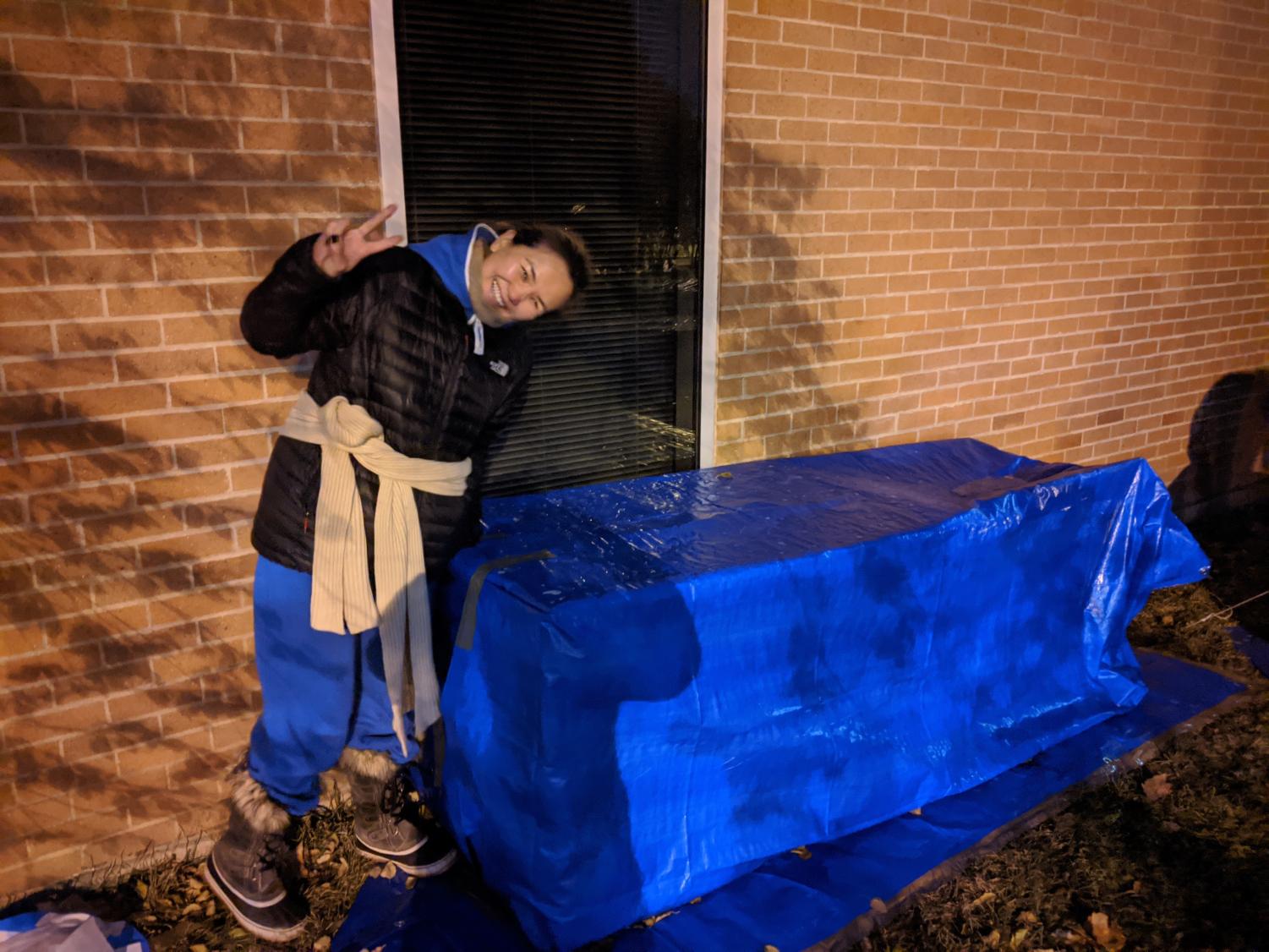Habitat for Humanity club experiences night in ‘shantys’ in cold
Students experiences life in cardboard homes.
November 19, 2019

Habitat for Humanity Club spent the night in “shantys” that they made from cast-off cardboard and other materials on the evening of Nov. 7, in order to educate our local communities about the lack of adequate housing and to draw attention to homeless youth. That evening the temperature dropped to 18 degrees fahrenheit.
Student Jason Rossner experienced his second year sleeping in his homemade shelter. His takeaway from the event is that, “At any given time there is always
going to be 10, 20 or a 1,000 people who will have to deal with homelessness, terrible weather conditions, and they might not even be lucky enough to have
the necessary materials to build a cardboard shelter. It reminds me of how lucky I am to have four stable walls and a roof over my head.”
The “shantys” were to show awareness of their most heart-wrenching issue of housing insecurity for local youth. High levels of vulnerability typify youth homelessness. To make matters more complicated, the issue of housing insecurity for youths in the Chicago suburbs looks very different from what most people envision when they think of homelessness.
More often than not “couch surfing” (moving from one temporary housing situation to another) makes suburban at-risk youth much less visible. The proof is that there are housing insecure youth present in our own Oakton community and many here are not aware of them.
Cheryl Thayer, Oakton Habitat for Humanity club advisor, describes homelessness as “a catch-all for many social problems such as mental health issues, unemployment issues and affordable housing issues for example. In fact, homelessness on its own may create its own social issues. The issues created can be drug and alcohol abuse and health related issues due to the unavailability of preventative medical care where the homeless population is concerned.”
Thayer continues, “Obviously, a lack of preventative medical care ultimately leads to early death, and criminal issues like theft to afford drugs that in turn might be being used to alleviate pain due to lack of medical care. This same cycle hits homeless children hard as well regarding the lack of education opportunities such as schooling, etc.”
Youth homelessness in particular may occur as a result of nothing more than turning 18 and being asked to leave the family home. It can also occur when a young person is recruited, at times from another country, to play a sport in the U.S. college program resulting in homeless college athletes.
University of Chicago’s 2017 Chapin Hall report titled “Missed Opportunities: Youth Homelessness in America” states that, “1 in 10 young adults ages 18 to 25 endures some form of homelessness in a year. Half of the prevalence involves couch surfing only. For young adults ages 18-25, 9.6 percent are located in urban counties and 9.2 percent are located in rural counties. 162 percent increase of youth with annual household income of less than $24,000 per year had 162 percent higher risk prevalence. It is also possible that these numbers are vastly under-reported.
To assist local homeless youth please donate to the Oakton Habitat for Humanity Club by contacting Cheryl Thayer at [email protected] or [email protected]. Cash or check donations can be dropped off with the Offices of Student Life at either the Des Plaines campus (Room 1530) or the Skokie campus (Room A160) between the hours of 9:00 a.m. to 6:00 p.m., Monday through Thursday or 9:00 a.m. to 5:00 p.m. on Fridays.
If any student is food insecure and are having trouble finding the Oakton Caring Closet website an online form can be found at www.oakton.edu/caringcloset.
The Caring Closet is also located in the CCID, Room 1430 at Des Plaines campus or the Office of Student Life, Room A160 at the Skokie campus to fill out a food order form. Please allow 48 hours for the order to be filled.


